Oxford University Press's Blog, page 40
October 26, 2023
Where there’s a will, there’s a way? Germany and the EU leadership quest

Where there’s a will, there’s a way? Germany and the EU leadership quest
In the wake of Russia’s full-scale invasion of Ukraine and other crises facing the European Union (EU), calls for Germany to take on leadership in the EU have again grown louder.
At the same time, Germany’s track record in terms of leadership is rather poor. In fact, the EU’s largest member state is (in)famous for its alleged leadership avoidance reflex.
Much academic research agrees that Germany has failed in systematically providing leadership in the EU. Rather, it has often shied away from the spotlight and shown little interest in assuming a leading role, other than in cases where there was an obvious overlap with its self-interest.
In discussions on German leadership, however, one key question has so far been consistently ignored: does Germany view itself as a country that should and could lead?
The issue of self-concept is critical, since leadership as a concept loses much of its value if we believe that it can happen by accident or without any kind of willingness to lead. Moreover, calls for more German leadership in the future are destined to remain unanswered if there is a lack of any such ambition.
“The issue of self-concept is critical since leadership as a concept loses much of its value if we believe that it can happen without willingness to lead.”
New data from an elite survey on the attitudes of both politicians and high-ranking state officials help us fill this gap.
On a normative level, the responses gathered show that the German elite has indeed overcome its leadership avoidance reflex. Most respondents acknowledge that Germany should take on a leading role in the EU, for instance by providing a common vision for the future and contributing more than others to improving the functioning of the Union.
At the same time, the survey data also exposes a striking gap between the normative endorsement of German leadership and the assessment of Germany’s actual leadership performance.
When asked about their primary policy field, less than 6% of respondents believe that Germany takes on a leadership role, and only about a third state that this is the case at least most of the time. The largest gap concerns Germany’s role in providing a vision for the future, where 90% agree or rather agree that Germany should do this, while only just over 20% believe that it actually does.
Hence, the survey of the German political elite reveals a significant aspiration-reality gap regarding leadership. But what does this mean for the EU moving forward?
On the one hand, it is clear that large parts of Germany’s political elite increasingly acknowledges that it ought to shoulder an extra amount of responsibility for the EU’s future and the collective good. Given the current polycrisis, this is good news for all those who wish for Germany to play a more decisive role.
On the other hand, the failure in actually providing such leadership casts a shadow of doubt on the prospects of German leadership. The institutional setup of the EU (many veto points and large heterogeneity) makes life hard for any potential leader and some reform of the EU’s decision-making rules, such as the abolition of unanimity voting in the Council, would contribute to moving beyond a “leaderless Europe.” Still, even in the eyes of its own elites, Germany could be doing much more to provide the EU with a vision and roadmap for the future.
Most importantly, however, Germany must internalize the fact that leadership is not possible without taking on additional costs—both economic and political. In a much-reported speech at the Charles University in Prague, Chancellor Scholz outlined the EU’s challenges ahead and Germany’s plans how to address them. Not only did he carefully avoid the term “leadership” in his speech, in most cases he also abstained from stating what Germany in particular could do to help the EU reach its common goals.
“Germany must internalize the fact that leadership is not possible without taking on additional costs—both economic and political.”
However, leadership does not end with identifying problems and suggesting possible solutions. Instead, it requires an extra effort—i.e. the provision of more material or ideational resources than other member states—to be successful. This will inevitably involve putting the EU’s common goal ahead of particular German interests. Skeptics may object that this is too much to ask of national leaders elected to represent their country’s interests in the first place. If this is true, however, regional leadership would be doomed to fail in the face of short-term national interests.
Hence, while Germany’s newly found self-concept is a major stepping stone on the way to shouldering more responsibility in the future, the realization of political leadership in the EU still remains a big challenge. In key areas like the Common Foreign and Security Policy, unanimity voting still presents a major obstacle to successful leadership, and it is far from obvious that Germany will be able to convince the rest of the bloc that reform is necessary. Moreover, a domestic public opinion easily swayed by any hint of “unjust” redistribution of German resources adds a further constraint. Finally, the German political elite needs to internalize, too, that it must go beyond the role of a “normalized power” by contributing significantly more resources than other member states if it wants to provide successful leadership to the EU.
Featured image by Maheshkumar Painam on Unsplash (public domain)
October 25, 2023
When fame is not enough: Margaret Walker and the twentieth-century South
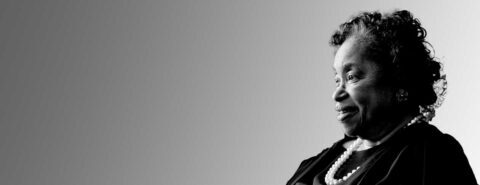
When fame is not enough: Margaret Walker and the twentieth-century South
It is hard for most of us to imagine a young Black girl growing up in the Black Belt South in the early twentieth century aspiring to be a writer. Even though revisionary attempts by white Southern critics who claimed a Southern Renaissance with William Faulkner as a leading figure had succeeded in masking some of the South’s harshest realities, most knew there were at least two Souths. That harsh reality existed, but it was not Margaret Walker’s South.
Although her family struggled financially, Walker experienced a nurturing culture, an excellent education despite segregation, and a sense of dignity and worth within a multigenerational household. Failure was not an option. What others might have seen as lacking, Walker never did. She had the ability and needed the opportunity to become whatever she wanted. At 15, she met the poet Langston Hughes, who was on a speaking tour of Negro Colleges. He had one message for her family: “Get her out of the South.”
What happened over the next decade, except for the one year she and her sister had to sit out school due to financial reasons, was a dream come true. She could not have been better positioned for the career she wanted. Studying under poets associated with the new modernist poetry movement meeting W. E. B. DuBois, who published one of her first poems in The Crisis magazine, Walker had enhanced her education beyond the average person.
Fully immersed in Chicago’s left politics and culture, she balanced her idealism with the social realism that was singularly important for any writer’s career at that time. We now know that Chicago was as influential as Harlem, New York, in launching the careers of prominent Black writers and the first golden age in Black America.
A few years after she met Harriet Monroe, leading critic, editor, and patron of the arts, Walker’s most famous poem, “For My People,” appeared in Poetry, the most prestigious journal of the period. It became the name of her first collection, winning a national award.
Writing The Life of Margaret WalkerThe House Where My Soul Lives: The Life of Margaret Walker is the complete, authorized biography of America’s first award-winning Black writer. The biography follows Walker throughout her career, marriage, birth of four children, and another award-winning publication, Jubilee, in 1966. The novel opened the door to a new era of American publishing and Black writing—the neo-slave narrative.
I was expecting a behind-the-scenes look at the author’s life like any other biographer when I began to interview Walker late in her life. After several years of working closely with her, I discovered what it means to become the custodian of someone’s story. Each visit left me with more questions than answers. Although she was still vibrant, actively organizing and leading significant events, another story had emerged, and another journey was nearly complete. Many thought her early return to the South before the publication of For My People had damaged her career, but I realized how much it had rescued and restored her. Chicago had brought a vibrant life and transformed her worldview despite a failed relationship, culminating in her success as a writer. The literary fame she quickly acquired she just as easily exchanged for motherhood and marriage, even as she would publish 10 more books. The North asked her questions; the South gave her answers and an identity that she could comprehend fully.
“The North asked her questions; the South gave her answers and an identity that she could comprehend fully.”
Walker became an entire generation’s most famous midwife. Everyone knew her, went to her for advice, claimed an affinity with her, and dared not cross her. It didn’t take me long to see that Walker was a new model, especially with the appearance of more and more Black women writers. She was a champion for them and gave new meaning to the idea of a Southern woman writer. She could claim it all: writer, teacher, scholar, mentor, sister, daughter, wife, and mother.
What had replaced her desire for fame? Why had a writer with two award-winning books become almost invisible on the literary scene when she died in 1998? The writing was there, I would discover. I had already begun to read the unfinished work in her archives at Jackson State University: unpublished manuscripts, outlines of sequels to Jubilee, historical studies, multiple versions of her autobiography, more poetry, political writings of various sorts, and a long list of essays derived from speeches she’d given over the years.
A critical essay, “On Being Female, Black and Free,” made a single appearance that started me on my journey to uncover why fame was insufficient. I stumbled upon a memorable quote:
“As a woman, I have come through the fires of hell because I am a black woman, because I am poor because I live in America, and because I am determined to be both a creative artist and maintain my inner integrity and instinctive need to be free.”
I had seen this intense side of her many times, but what particular claim to freedom did she have?
“Walker was a champion for Black women writers and gave new meaning to the idea of a Southern woman writer.”
I was uncovering a path—Walker’s discovery of a more profound passion and a larger story she saw herself creating. “For My People,” her signature poem, was a promise and fulfillment. Walker sought to make an impossible mission possible because of her choice to live in the South. She wanted the freedom to do something new, the message that came through clearly. Her extraordinary knowledge, perseverance, and access as a writer could produce more than books. But could it change how other people saw the South and Southerners saw themselves?
Settling in the majority-Black city of Jackson, Mississippi, had given Walker a distinct advantage. She rediscovered where she belonged and saw herself as a bridge for others to cross over. That bridge extended to writers like herself and a community that her presence helped to uplift. She knew how easy it was to affirm a distaste for the South: its violence and racial norms, regional differences and Jim Crow politics, white gentrification at the expense of black poverty, and its preoccupation with religious values that disguise all forms of ethical backsliding.
Walker’s oppositional tactics began to work almost immediately. Resisting the all-too-common narratives about the South, she reimagined a progressive world and developed a custodial relationship to it, inventing new relationships that required acts of human engagement. She believed we don’t need to leave the South to transform ourselves; we only need to develop deeper connections to the place and its people. Walker’s branding of complex, multicultural, interdisciplinary space in a multi-vocal South allowed her to become a “Twentieth-Century Voice from the South.” The reference was to an 1892 book by Anna Julia Cooper that had raised parallel questions about the role of women.
For the 50 years between 1942 and 1992, in her published work, speeches, and every gathering she oversaw, Walker created an inseparable connection between the South and the rest of America, challenging the perceived notions of a people and a place as unliveable and unbearable. She refuted the idea of a closed society with openness, mobilizing those who displayed literary and artistic excellence and those who had become high-level political operatives. Jackson State University was a regular meeting place for writers and artists, politicians and global activists, religious leaders, and educators with an agenda for change. Walker provided America with a new model. Today, we’d describe Walker’s methods and practice as the “public humanities” and producing new forms of knowledge to guide us as “engaged scholarship.” Her vision was interdisciplinary, and she remained committed to Martin Luther King’s idea of a “beloved community.” The recognition came from everywhere, including Mississippi and President Jimmy Carter. For most of the second half of the twentieth century, Walker was one of the most revered women of her time.
“Walker created an inseparable connection between the South and the rest of America, challenging the perceived notions of a people and a place as unliveable and unbearable.”
Ultimately, that beloved community was not hers to have. While she was famous, she was not known as a great author. She took great satisfaction in believing and demonstrating that the South could show us a better way. But the version of humanity that Walker saw was yet to be. Her idealism blinded her even as she warned us of an increasingly inhumane world overtaken by greed and corruption. In her later essays, she did not hesitate to call out the sexist, racist, and fascist tendencies she saw. She told us to watch out for those who viewed themselves outside this culture’s pale. Acts of commission are too often linked to acts of omission.
In Walker’s case, it was the realization that her love for and dedication to the South could not protect her. Her values, her ethics, and her belief in humanity were being tested. Two instances stood out: her suit against Alex Haley for plagiarizing Jubilee and Richard Wright: Daemonic Genius, her 1986 biography of the famous writer she had known well. The public condemnation of her reflected powerful outside forces threatening her excellent work and reputation. The later proof that Haley had plagiarized her work and that of others made no difference. The damage done was most visible in the negative reception the Wright biography received. Despite her best intentions, Walker had gone from the height of fame to infamy. Her family alone stood by her.
In Margaret Walker’s story of self-making and remaking, I understand what can happen when fame alone is not enough.
October 24, 2023
Another hopelessly obscure word: brocard

Another hopelessly obscure word: brocard
The title of this blog post harkens back to the post of three weeks ago (4 October 2023) on the word cowan. The post called forth a few responses, and I decided to risk telling another story of the same type. Some words are so rare that few people know and even fewer study them. In my comprehensive bibliography of English etymology, which features dozens of papers and notes on local words, archaic words, forgotten curses, and obscure slang, a few “outcasts” appear with a single citation devoted to them. Such is, for example, brocard, the subject of a 1948 article by John Webster Spargo (Speculum 23, 1948, 472-76), a distinguished American philologist (1896-1956). Only the opening page of the article is available online, while I, naturally, have the entire text in my office. Below, I’ll retell this paper and add a few comments, along with a tentative conclusion.
Brocard (I am copying the definition from The Century Dictionary) is “a law maxim; in Modern French, a taunt, jeer, raillery.” According to the original OED, “brocard, akin to Medieval Latin brocarda,” was a name given to the “sentences of Burchard[965-1025], bishop of Worms in the eleventh century, who compiled twenty books of Regulae ecclesiasticae.” The bishop, not the word, goes back to the eleventh century. A name like Burchardus might perhaps be twisted into Brocardus. Words from names (so-called eponyms) are numerous. Such are not only sandwich and cardigan but also the likes of spoonerism and philippic. However, as Spargo observes, the Latinity of Burchardus is a very far cry from the neat compact Latinity of legal maxims, so that the way from Burchardus’s name to brocard is far from obvious, and here we should agree with him. There is enough reason to look again at the origin of this word.
Friedrich Carl von Savigny (1779-1861), the great expert in Roman Law and one of the teachers of Jacob Grimm, objected to the association of Burchard with brocard “solely because of similarity in sound” and concluded that the origin of the word is very uncertain. Spargo mentioned a half-dozen “sportive guesses” about the derivation of Brocard, without citing them. No doubt, those guesses are nonsense, but I am still sorry that he passed them by. Knowing wrong and fanciful etymologies is useful, in order not to repeat them and to warn the unwary against taking them seriously. Spargo’s main point is that reducing the immense mass of Roman laws to manageable size was a gigantic enterprise. The ancient authorities, he says, were weighed and compared, so that contradictions could be resolved and harmonized. Those digests came to be in part the foundations of the cannon law of the Church. And this circumstance inspired Spargo’s etymology: “the basic idea of diverseness of origins, of versatility and variety in beginnings, remained, I take it, a major actor in man’s thought about canon law.”
 A mildly variegated badger, sharp nose and all.
A mildly variegated badger, sharp nose and all.By Caroline Legg via Flickr (CC BY 2.0 DEED)
Thus, Spargo suggested that the motivation for coining the word brocard was the idea of diverseness and variety: “There is evidence that the sparkling examples of the Digests was not lost upon the compilers of cannon law, because appended to the standard edition of the canon law we find a collection of 88 ‘regulae juris’ [Rules of Law], many of which are very like maxims in their terse, compact Latinity.” According to his hypothesis, the inspiration came from the root broc-, seen in the ancient Irish word for “badger.” The Old Irish name of this animal was brocc. It reached England and yielded dialectal brock (the same meaning), a word many English speakers still understand. The main reference in this ingenious etymology is to the animal’s variegated hairs: “It is likely that ancient Celts used such a term for the badger because of the variegated colors of the animal’s fur, Welsh broc meaning ‘of a mixed color’, and Modern Irish broc meaning ‘grey, speckled’.” The origin of this animal name has not been determined to everybody’s satisfaction. According to a competing hypothesis, the word brocc “badger” owes its existence not to the animal’s variegated hair but to its sharp nose. We’ll presently return to the form of the badger’s nose.
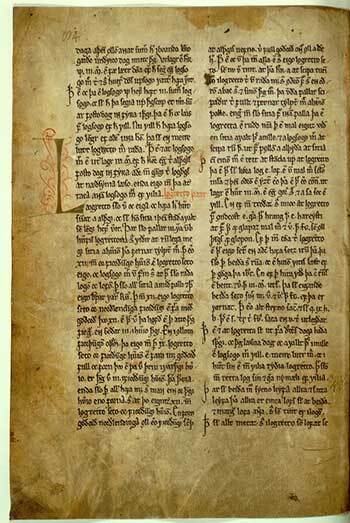 A page from the medieval Icelandic legal code Grágás. No fully convincing expansion of the title exists.
A page from the medieval Icelandic legal code Grágás. No fully convincing expansion of the title exists.Via Wikimedia Commons (public domain)
I suspect that Spargo’s guess has little chance of acceptance. Too many intermediate steps have been passed over. His main premise is indeed acceptable. For instance, great Icelandic manuscripts often have enigmatic names, the most famous of them being Edda. References to animal names are common in this context. Thus, the legal code of Medieval Iceland is called Grágás “Gray Goose.” But if we follow Spargo, we have to agree that those who coined the word brocard were inspired by a Celtic animal name (why were they?) and added the suffix –ard to broc. My experience has taught me that the more complicated an etymology, the greater the chance that it is wrong. Savigny’s doubts were justified. Yet even the strained derivation of brocard from Burchard looks more probable than the derivation from broc.
In this history, several more details should not be overlooked. As noted, French brocard, from Medieval Latin brocardus, means not only “maxim” but also “joke, jibe.” (The Medieval Latin noun must have been formed from the French one!) French etymologists suggest that the second sense (“joke”) appeared under the influence of the verb broquer (a dialectal form of brocher) “to wisecrack, quip” but hesitatingly refer the sense “maxim” to the bishop’s name. In the fifteenth century, two Old French words were recorded: brocard “maxim” and brocard “deer.” English brocket “a stag in its second year with its first horns, which resemble a short dagger” (naturally, from French) is its descendant. Close by, is English brocade. Incidentally, English broach and brooch (also from French) go back to the same root meaning “sharp, prickly.” Modern French brocard “maxim” and brocard “deer” are, naturally, listed in dictionaries as two different words, the more so as brocard “maxim” was recorded about a hundred years earlier than brocard “deer.” Yet their affinity is unquestionable.
I suggest that there was a Medieval Latin word brocardus, mirroring Old French brocard. It first must have meant “something sharp, ‘acute’” and soon developed the sense “something ‘cute’.” By that time, Burchard’s maxims had existed for about four centuries. They were terse and pointed (that is, very much to the point). The French word suited them to a tee. Perhaps the similarity between the word and the bishop’s name also occurred to people in the late Middle Ages, as it did to modern etymologists, but in principle, Savigny seems to have been justified in distrusting an occasional “similarity in sound.”
 This is a brocket, a possible linguistic relative of our brocard.
This is a brocket, a possible linguistic relative of our brocard.By Bernard Dupont via Flickr (CC BY-SA 2.0 DEED)
Not a legal historian and not a French etymologist, I’ll be glad to hear objections to my reconstruction and my attempt to raise the word brocard from its obscurity and to leave the bishop in peace. He worked in Worms, and it was in Worms that the first half of The Lay of the Nibelungen played itself out. You will see a picture of modern Worms in the heading. Unfortunately, no image of the famous bishop has come down to us. Worms is a Celtic name, and so is brocc, but brocard is probably not.
Featured image: Worms, the Rhine, Germany, 1890 (public domain)
Are the Apostolic Fathers relevant to twenty-first century readers?
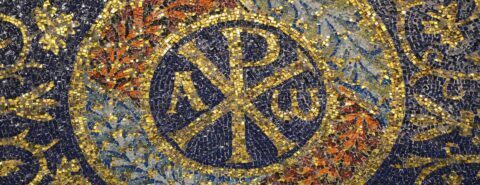
Are the Apostolic Fathers relevant to twenty-first century readers?
The value of the “Apostolic Fathers” is evident for a better understanding of the New Testament and the formative years of the “Jesus Movement” that came to be called Christianity. The Apostolic Fathers (AF) can help us measure our own understanding of that early phase of church history. In other words, is our own perspective different from the way in which the second generation interpreted the meaning of the events that gave birth to the faith which they possessed? The reading of the AF can also prove to be profitable for some concrete questions and issues that Christians face today.
Clayton Jefford offers a balanced perspective on the value of the AF to the modern reader:
In the final analysis it would be a gross overstatement to claim that the Apostolic Fathers offer an answer to all of our modern questions about the development of the church after the New Testament period. At the same time, however, it is certainly fair to say that our helpful knowledge of these materials enables us to better understand how the views of the biblical authors came to fruition in the subsequent years of Christianity’s historical evolution.
The Apostolic Fathers: An Essential Guide, 129
It is always helpful to look back at the sources of a movement to see if its subsequent history has followed its earlier exemplars. This approach is not to intended to “canonize” those earlier documents, but to force us to ask if we understand the issues the way that early generations of Christians understood them and responded to them. Despite the vast social and economic differences from the second to the twenty-first century, the same religious and social issues in our world resemble that ancient context far more than we recognize at first. Historians have often testified that the second century was almost as pluriform a world as exists today. The Roman Empire comprised a kaleidoscope of different religions and philosophies that can challenge the minds of students attempting to comprehend them all. These ancients faced similar fundamental problems, but under the different conditions of their time. There are important issues that emerge from their reading, such as the vital subjects of identity formation; conflict with a syncretistic environment; a theology that is relevant and not other-worldly; and how to respond to a culture that sometimes views committed Christians as similar to strange aliens. These are just a few of the parallels between these centuries so far apart in time and historical context.
“It is always helpful to look back at the sources of a movement to see if its subsequent history has followed its earlier exemplars.”
No, we should not exalt these writings as containing the long-lost solutions to our modern problems. The AF themselves would resist such an elevated evaluation since they were often simply sharing from their hearts and minds. This body of writings, slightly shorter than the New Testament, is not simply a treasure house for arcane specialists. These people were attempting to live their lives as Christians do today, and to find a way through the same dense forests that we also encounter. These writers deserve careful reading if for no other reason than that they are not always uniform in their modes of expression, as a church manual (Didache) is not the same type of document as an allegory (Shepherd of Hermas)! But a careful review of them can still return us to the center of their world which is similar to ours, the world of a first century Nazarene whose teachings and actions, both in his earthly life and in his death and afterlife, had transformed their lives and can still do so today for those who have ears to hear.
Even if these works are not viewed as “inspired” and canonical, they have much to teach us because some of them knew the apostles or at least conferred with those who knew the apostles personally. They are important today because they contain the earliest reflections of Christian life outside the New Testament. They show us corporately what the Church was coming to be and individually what the Christian life looked like. Whether we view this glimpse into their world as a decline or a development, Christians today, whether rejecting or accepting the ideas of these writers, are their heirs.
Featured image: Chi Rho Mosaic, Mausoleum of Galla Placidia, AD 425, Ravenna by Carole Raddato, via Flickr (CC BY-SA 2.0 DEED)
October 23, 2023
On the launching of a new library of classical Chinese literature

On the launching of a new library of classical Chinese literature
250 years ago, Ji Yun compiled one of the world’s largest premodern encyclopedias for the Chinese court. This fall Oxford University Press launches the first endowed bilingual translation library of Classical Chinese Literature thanks to a generous gift by Ji Yun’s descendant, Agnes Hsin-mei Hsu-Tang and her husband Oscar Tang. How will the launch of this historic project transform our understanding of the Chinese canon, East Asia’s literary heritage, and world literature?
Designed to present works from three millennia of literatures in classical Chinese from China and East Asia’s greater Sinitic World in fresh, bilingual translations that are honed to be solidly scholarly, yet eminently readable, The Hsu-Tang Library (HTL) is a pioneering, unprecedented endeavor.
As an endowed library built to last for future generations, HTL will gradually and strategically tap the monumental treasurehouse of “Literature”—scriptural, historical, philosophical, poetical, dramatic, fictional, devotional, or didactic—produced before 1911 in forms of the classical Chinese language. It carries an ambitious symbolic charge through Ji Yun (1724–1805), the maternal ancestor of Agnes Hsin-Mei Hsu-Tang, who served as chief compiler of one of the world’s largest premodern encyclopedias, The Complete Library of the Four Treasuries (Siku Quanshu).
We are launching HTL this year as this encyclopedia celebrates its 250th anniversary and bring classical Chinese-language literature to a new global world of anglophone readers avid to more fully experience one of the world’s most continuous and voluminous literary traditions. At its projected pace of publishing three to four volumes per year, HTL will quickly showcase the immense variety of this literary tradition.
“We are launching The Hsu-Tang Library in 2023 as the encylopaedia celebrates its 250th anniversary.”
Establishing HTL now has historical significance. With the rise of divisive nationalisms and Japanese imperialism across Asia, the twentieth century saw the rapid death of classical Chinese as the lingua franca of the “Sinographic” world of China, Korea, Japan, Vietnam, and other states that for many centuries were tightly interconnected through its script, and political, religious, and literary institutions. This shared legacy is currently obscured, but as scholars we have the duty to stand above our historical moment.
In this first century of the death of classical Chinese, we have the privilege and duty to curate East Asia’s Chinese-style literary heritage in bilingual translation. This happens at the exciting point in time when the Chinese literary tradition prior to the twentieth century has rapidly become “classical” in the face of vernacularization and modernization movements—a process that took a revealingly different shape in Europe since the Renaissance, with the emergence of vernacular literatures from the peripheries of Latin (see Wiebke Denecke and Nam Nguyen). Despite its historical significance for the East Asian region, an endeavor like HTL can currently only happen outside of China and East Asia, at healthy academic distance from the political and ideological imperatives that keep East Asia fiercely segregated in our historical moment.
Facing the magnitude of this task and opportunity we start humbly this fall with the minute cornerstone of five launch volumes. We kept honing our vision, thinking in growing circles about how to start off not too canonical, but also not too uncanonical, not too challenging, but also not too crowd-pleasing, not too stereotypically Chinese, but also not too un-Chinese, not too narrowly literary, but also not too unliterary, by current tastes (see an extended statement of our vision and launch line-up). It’s hard not to be self-conscious in such a moment, first, because HTL aims to become a library of standard bilingual editions, inspired by the by now century-old Loeb Classical Library of Greco-Roman literatures; and second, because HTL will inevitably create a new anglophone canon of Chinese literature, distinct both from Sinophone canons of Chinese literature or the world-literature-great-books-style mini-canons of Chinese literature institutionalized for example by the Norton Anthology of World Literature (which, as I may say as one of its editors, has its own value and place).
“In this first century of the death of classical Chinese, we have the privilege and duty to curate East Asia’s Chinese-style literary heritage in bilingual translation.”
But forget for a moment about grand imperatives like massive classical text corpora, historical moments and scholarly duties, or canons. Founding Associate Editor Lucas Klein and I have both a professional and personal passion to make HTL into a platform for an emerging new culture of translation, which transcends the kind of Sinological translationese that is still wired into our classical training and that our students and colleagues of other literatures put down, however much we strive to enlighten them of the original’s magic. We want to be a home for translations that open possibilities for the English language and the global literary imagination today; translations that join the classical corpus to a future potential. Translations that, as Lucas Klein, once poignantly put it, blend “erudition” and “taste,” and are smartly scholarly and eminently readable.
Only literarily vibrant translations will entice readers into the wondrous diversity of the human experience, as it intersects with verbal creation—this is what we want our readers to taste. Take our launch volume Changchun’s Journey to the West, a travelogue of a Chinese Daoist master summoned to the court of Chinggis Qan narrated through the eyes of a disciple. Previous translators had dropped the 70-some poems included for lack of “literary value.” They are translated here for the first time. As our author encounters the rough beauty of magisterial mountains and fur-clad, blood-and-meat eating peoples across Central Asia and the Mongolian Plateau, his breathtaking experiences overstretch the Chinese poetic idioms nurtured in Chinese landscapes, cultural and aesthetic values over centuries. Whether discovering Daoist-style primevalness or ambivalently-coded primitive high antiquity, or trying to speak the unspeakable, these poems are fascinating material for a comparative cultural poetics of literary traditions—and humans— stretched at their limits.
“We want to be a home for translations that open possibilities for the English language and the global literary imagination today.”
As for featuring female authors, we wanted many—something more representative of the female experience. Beata Grant’s An Anthology of Poetry By Buddhist Nuns of Late Imperial China features mostly first translations of poetry by 65 nun-poets, variously driven to the devotional life as children, vulnerable widows, or lone survivors of violent political cataclysms. The experiential depth of these poems—when read as traces of the nuns’ moving life stories—has value beyond “performing” by any type of literary standards. See Yikui Chaochen (1625-1679) pinpoint a mystical experience in a frightening world, capped by a casual yearning for femininity:
This hard life is chaotic and confusing
with lust, greed, and anger,
But when suddenly the mind-flower opens
it is spring everywhere in the world;
[…]Lazy when it comes to asceticism,
I’ll let my hair grow long!
Page 165
The female religious experience is philosophically alluring in Shangjian Huizong’s (1644-1661) “Village Life” where accessories of the female boudoir merge in a flash of enlightenment before the self-reflective mirror.
Living here impoverished
I’ve lost all taste for ornaments. […]
The face of the woman in my mirror,
is a flower that knows Emptiness.
Page 71
How will HTL reach audiences beyond East Asian Studies, and across the world? Western academia is significantly understaffed and quickly losing experts teaching non-Western classical literatures. In the midst of the crisis, particularly in the historical humanities, it is heartening to see that our demographically diverse students are ever more excited about their own or others’ literary heritage, beyond the West. And their brains are wired through architectures of the digital world. Might they become a backdoor to finally making Chinese into a world literature? The generation of our teachers has tried hard to fight “Eurocentrism,” but typically only reached the already converted.
Will this not hardwire the Chinese literary tradition into our notions of world literature through a digital ruse of reason? When, in the future, HTL volumes appear on OUP’s digital platform, Confucius, Du Fu, and Cao Xueqin will just be a click away from Plato, Shakespeare, and Jane Austen.
Featured image by Jean Beller via Unsplash (public domain)
Science in the time of war: voices from Ukraine

Science in the time of war: voices from Ukraine
On 23 February 2022, I drove back to Michigan after giving a talk at the University of Kentucky on genome diversity in Ukraine. My niece Zlata Bilanin, a recent college graduate from Ukraine, was with me. She was calling her friends in Kyiv, worried. A single question was on everyone’s mind: will there be a war tomorrow? The thought of invasion, though, seemed unimaginable, illogical, even absurd.
At 2am, Zlata woke me up. “They are coming,” she said. I remember the color of her face–pale green. The world would never be the same again.
Indeed, the war has changed everything; priorities are no longer the same. Many researchers enlisted and went to fight. Others, their homes destroyed, fled. Many packed and crossed the border in the hope of a better life in the West.
Nearly 600 days later, the war continues, each day amplifying the human tragedy, of lives and futures lost—lives that could have otherwise been dedicated to better and more meaningful purposes.
As a researcher, my colleagues and I could not help but think about the crushing blow the war delivered to the vibrant Ukrainian scientific community. Ukraine is a country with incredible resources, unique human genetics given the land once served as a human migration crossroads, and a large dedicated, community of researchers working on numerous and varied projects. Now, however, research centers have been destroyed, and universities have few new students, as they now go to study abroad where there are opportunities, and they cannot be drafted.
Through all this, although my laboratory is at Oakland University, I continue to work with my colleagues back home, building a research program in genomics at my alma mater, Uzhhorod National University (UzhNU). Several years ago, my colleagues and I dreamed up a project to sequence a hundred Ukrainian genomes to provide data for researchers to have tools to study the history of migration, admixture, and distribution of medically relevant variation in the local population. This collaboration started with President of UzhNU, Prof Volodymyr Smolanka, a neurosurgeon by training, an effective administrator, and an active scientist.
Given his work and his position, for this blog post, I wanted a comment from him on the state of Ukrainian science since the start of the war. I called and asked, simply: “Is it harder or easier?” His reply was one that matches the current thoughts of those now involved in retaining and rebuilding Ukrainian scientific programs, “One thing I can say is that there is a lot less government funding. That’s clearly a negative. On the other hand, there seem to be more grant opportunities from international sources, and this helps us to stay afloat.”
“What about the people,” I ask, “How do they feel about science?”
“I would not say that they were optimistic. I am not sure that pessimistic would be the right word either. You know, those scientists that did not leave, they are working, they really want to work in science.”
Thinking about those who are not leaving, I contacted an old colleague who has stayed: Dr Serghey Gashchak, a legendary field biologist, who, among many things, worked in the Chornobyl Exclusion Zone and knew everything there was to know about animals in Chornobyl. We used to call him “Stalker” in reference to the Russian movie Stalker, about a post-apocalyptic wasteland called “The Zone.”
Given his research background and work in a disaster zone, I emailed Serghey about his thoughts on the current situation. “It’s impossible to work in the Zone these days,” he said. “The barbarians are not at the gates anymore, but there are no research projects, and if there were, there’s no one to work on them. Many of the research staff are fighting in the war. Perhaps it is time to close.”
I was stunned to hear that, knowing Serghey’s inquisitive nature, it was hard for me to believe he would just stop doing research, Worse, I realized, this was likely felt by many. While my head said this might be true, my heart felt there must be a way forward. But, with the war’s destruction of institutions and financial mechanisms, such a mechanism couldn’t rely on expensive infrastructure and top-down government funding schemes. That would take decades to rebuild. What was needed was a way to integrate Ukrainian research into the worldwide research community: to bring opportunity and virtual infrastructure to Ukraine. In fact, the basic mechanisms for bringing research to places all around the world have been in place for decades in the form of international courses and conferences, remote learning, and worldwide collaboration — quite simply we could take the current international infrastructure and modify it to empower researchers in disaster zones.
A case in point is a summer research program developed in 2022—during the war—that takes place at Uzhhorod National University, which, although it is in Ukraine, is a safe distance from the war zone. This research program is led by an international team: Drs Fyodor Kondrashov (OIST, Japan), Roderic Guigo (CRG, Spain), Serghei Mangul (USC), and Wolfgang Huber (EMBL, Germany). Here, international faculty come to Ukrainian students and continue to train them and engage them in work around the globe.
I called Dr Kondrashov at his home in Okinawa and asked what research area he thought would be most useful to bring to a devastated Ukraine. He replied immediately: “Bioinformatics is a good choice because you could accomplish a lot more with the same amounts of resources than in other disciplines, such as molecular biology.”
He was right. The hybrid nature of bioinformatics—combining biology, computer science, mathematics, and statistics—encourages cross-disciplinary collaborations essential for solving complex biological problems—that can easily be carried out across borders. More, skills in these areas are highly transferable, can involve people who work remotely, and can serve as a catalyst for revitalizing war-affected regions.
This is just one example of how already in-place international infrastructure can be brought to Ukrainian research, and it is now one of many ongoing projects to allow Ukrainian researchers to continue their work. Many more examples are presented in the recent review, Scientists without Borders in GigaScience. In fact, we have come to realize, and have described in the review, that these mechanisms can be expanded: taking suitable and already existing international mechanisms and infrastructure to areas anywhere in the world that have been destroyed by political strife and natural disasters.
For Ukraine, and personal involvement, I teach and train Ukrainian students remotely. It is well worth it: an example of the passion of young researchers to continue their training, to embrace new opportunities is Valerii Pokrytiuk. He was admitted to my graduate program in bioinformatics at Oakland University in Michigan, but before he could come, the war broke out. Valerii volunteered to fight and is doing so somewhere in Eastern Ukraine. Periodically, when conditions allow, Valerii still joins us online for book club discussions, lab meetings, and to listen to courses I teach.
The war continues. And so does our fight.
Featured image: “Bucha, Ukraine, June 2022” by U.S. Embassy Kyiv Ukraine, Wikimedia Commons (public domain)
October 20, 2023
Vaughan Williams’ Four Last Songs: “letting go” of the music

Vaughan Williams’ Four Last Songs: “letting go” of the music
Composer Ralph Vaughan Williams grew up in a household that regularly used to read to each other, particularly during the long winter evenings. When he married the poet Ursula Wood in the 1950s, the two of them continued to read to each other: the spark of an idea that became the song “Menelaus” from the Four Last Songs grew out of the two of them reading Homer together.
The songs are called “last” but “Menelaus”, rather touchingly, was written only a year or so after Ralph and Ursula married, following a close, 20-year friendship, which perhaps puts a different spin on the “coming home” feel to the text. There is plenty in the genesis of this set for the academics to argue over: which songs should be placed together, should any be omitted, can a man really sing “Hands, Eyes and Heart”? (Ursula says no, Ralph is fine with it), and much more.
That said, since getting to know these pieces and arranging them, I’ve come to love them more for the way in which they showcase compositional styles Vaughan Williams developed over the years. If you perform the pieces in the order in which they are usually published, the two inner poems feel to me to be very much in the mould of some of those he wrote for amateur choir–deceptively simple settings, which are at the same time so full to the brim of emotions that you need do very little to them in performance to show them at their best.
The outer pieces are much more the Vaughan Williams of “The Cloud-Capped Towers” (from his Three Shakespeare Songs): pastoral ambling is swapped for swirling mists and dark mystery, shifting harmonies, unexpected chromatic turns. It’s still, I find, surprising and wonderful to hear Vaughan Williams like this.
When I was at university, one of our regular high-brow conversations was which composer would be the best to go to the pub with. Vaughan Williams was regularly up there. I think it was because he is a composer who wears his learning lightly, and who never takes himself too seriously—who has all the skills but who can let go of them and allow a choir to put their own stamp on a piece. Here he is in a charming letter to the baritone Keith Faulkner, on sending him “Hands, Eyes and Heart” (the final piece in the Four Last Songs):
My dear Keith,
Here is a short pendant to “Menelaus”
1. You may not like it,
2. You may think it unsuitable for a man,
3. You may think it too intimate for public singing,
but if not, would you feel inclined to sing it…? You can sing it in any key you like.
Letter dated 7 March 1955. Source: Vaughan Williams Foundation. Reproduced by permission of the Vaughan Williams Foundation
Here he is again, as told by David Willcocks:
I asked him when I was conducting one of his works, whether I was interpreting it as he would wish. He would reply “I wrote the music: it’s up to you to interpret it. I’m not the one to dictate to others how they should perform my music. I’ve often heard performances […] which made the music more beautiful than I ever conceived it in my head.”
A Life in Music: Conversations with David Willcocks and Friends, ed. William Owen (OUP, 2008) p.106
This relaxed approach to the interpretation of his own work is quite refreshing, and not something that every composer could cope with. Benjamin Britten, for example, would insist:
I’ve put in my score exactly what I want […] if you do anything, I shall be unhappy.
A Life in Music: Conversations with David Willcocks and Friends, ed. William Owen (OUP, 2008) p.107
In arranging the Four Last Songs, I wanted to maintain something of the simplicity of the inner pieces and the mystery of the outer works—to “colour them in,” perhaps. Choral arranging is such a fascinating art, and there are so many valid approaches. When you arrange for choir, you have so much freedom, such colour at your disposal, but you also have restrictions—the arranger who ignores their voice leading will not make many friends for instance. The inner songs in this set leapt up as pieces that would transfer well to a cappella singing—and this, I hope, helps to keep that feeling of relative simplicity. Of course, there’s lots going on, particularly in “Hands, Eyes and Heart” but I hope the relative stillness and subtle movements are preserved.
The piano parts of “Procris” and “Menelaus” are not easily translatable for choir, and for this, as well as studying the original score, I listened to Anthony Payne’s excellent orchestral transcriptions of the set, and used the original piano accompaniment as a base on which to add some more colour than a single vocal line allows.
And in performance? I believe we should take Vaughan Williams at his word—take his music, and make it as beautiful as we can, in whichever way works best for each individual choir. If a particular part is sounding a bit a weedy, add some more voices from a different part (I often ask my altos to add a bit of lustre to the odd solo tenor line); redistribute the voices if the melody isn’t coming through in a particular place or acoustic. In short, be flexible in both your approach to the score, and in your singing of the piece. Take the score as a starting point and make it brilliant and moving and wonderful in any way in which you can—and that, I think, is something of which Ralph Vaughan Williams would approve.
Featured image: Claude Lorrain, via Wikimedia Commons (public domain)
October 19, 2023
Supporting communities through society publishing

Supporting communities through society publishing
Of the more than 500 journals OUP publishes, over two-thirds are published in collaboration with learned societies, charitable organisations, and academic institutions. As we transition towards open access (OA), our approach is guided both by the priorities of these communities we work with and our unwavering commitment to publishing trusted research.
The financial returns journals provide to the societies and other organizations we work with support their critical community programmes, as described in the comments and videos below. We carefully consider new journal launches and flips (journals converting to OA from a subscription model) to ensure they provide a sustainable path forward for society-owned OA journals, ensuring societies can fund their community-based activities well into the future.
In this blog post, we hear from a selection of societies and editors-in-chief on the benefits of OA publishing for their respective research fields and communities, and details of activities and programmes supported by their publications.
Mark Boyer, Executive Director of the International Studies Association (ISA)Find out more about Global Studies Quarterly, the open access journal of the ISA.
Elise Kuurstra, Executive Director of the Federation of European Microbiological Societies (FEMS)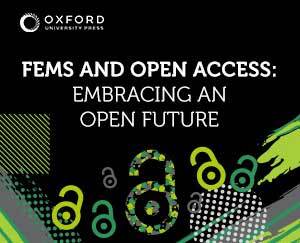
At the Federation of European Microbiological Societies (FEMS), we have spent a lot of time over the last few years grappling with the best way forward in terms of the open access future of our journals. Microbiology is such an important discipline for understanding and improving both human health and the health of the environment, our food supply, our biotechnology, the world’s ecosystems, and much more. Researchers (as well as many of those funding the research) really want to be able to share this important work as widely as possible. As an organisation run by the microbiology community, for the microbiology community, it is important for us to provide access to the science as well as the publishing opportunities that researchers are increasingly requesting.
We are excited that for 2024, all but one of our journals is going to be to fully OA, making everything we publish in those journals freely accessible to anyone in the world with access to the internet. It hasn’t been an easy decision: it means that our journals will likely generate significantly less surplus revenue (which we use to support our community through a range of activities and events, including direct grants), and it also means that some of our authors who are not part of a “read and publish” deal with OUP and who cannot access university or funder monies to pay the publishing charge may feel unable to publish with us.
That does not sit comfortably with us, and we have engaged in a number of ways to try to lower that financial barrier, including generous discount and waiver policies. We also have kept our flagship, broad scope, subscription journal, FEMS Microbiology Letters, as free-to-publish and intend to grow it to serve those authors who cannot access any funding for OA publishing even more than it does already.
Most importantly, though, we felt that it was a priority to ensure that microbiologists across the world had access to established, high quality journals that were fully OA, as readers—but also as authors. The FEMS journals are providing an established, trustworthy OA home for authors who no longer wish to submit their work to for-profit journals: not only is FEMS not-for-profit, but so is our publisher Oxford University Press. We think it is hugely important to the long-term health of science communication that research is professionally published (with all the checks and balances that entails) and openly accessible—and published for the benefit of science and scientists across the world.
Find out more about the FEMS journals transitioning to open access.
Mike Edmunds, President of the Royal Astronomical SocietyFind out more about the RAS journals, Monthly Notices of the Royal Astronomical Society, Geophysical Journal International, and RAS Techniques and Instruments.
Kateryna Makova, President of the Society for Molecular Biology & EvolutionFind out more about the SMBE journals, Molecular Biology and Evolution and Genome Biology and Evolution.
Angelo Auricchio, Editor-in-Chief of EP Europace: EHJ Arrhythmias and Electrophysiology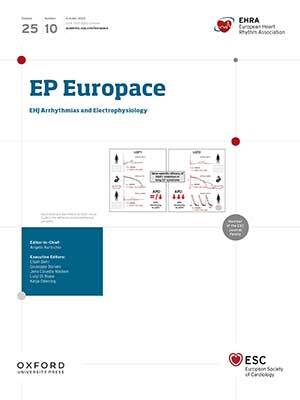
EP Europace: EHJ Arrhythmias and Electrophysiology provides a unique open access platform for the publication and dissemination of high-quality original science, opinion, and education from leading European and international authors. It is the official Journal of the European Heart Rhythm Association and is affiliated with the Working Groups on e-Cardiology and Cardiac Cellular Electrophysiology of the European Society of Cardiology.
Since EP Europace: EHJ Arrythmias and Electrophysiology transitioned to a fully open access publishing model, online usage of journal content globally has grown significantly. By removing the previous subscription “paywall” and making journal content back to Volume 1, Issue 1 freely available for all readers, we have increased the journal’s international readership and improved access to research findings for academics, clinicians, and the research community.
Find out more about EP Europace: EHJ Arrythmias and Electrophysiology.
Alessia Gimelli, Editor-in-Chief of European Heart Journal – Imaging Methods and PracticeFind out more about European Heart Journal – Imaging Methods and Practice.
Philip Moons, Editor-in-Chief of European Journal of Cardiovascular NursingFind out more about European Journal of Cardiovascular Nursing.
October 18, 2023
Believe it or not: one more book on language and language history

Believe it or not: one more book on language and language history
In summer, I discussed the book ‘Like’, ‘Literally’, ‘Dude’: Arguing for Good in Bad English by Valerie Fridland, and the posts on it attracted some attention. Studies on the history of language and the development of Modern English appear in a steady stream, but they rarely address the general public (the uninitiated). That is why, when a colleague alerted me to the 2020 publication of Don’t Believe a Word: The Surprising Truth about Language by David Shariatmadari, I followed his advice and read the book. It may not be too late to cast a glance at that “surprising truth” even three years later.
Originally, the book was published in Great Britain by Orion as From Myths to Misunderstandings: How Language Really Works. It contained 288 pages. The American edition runs to 324 pages, but the text, I assume, remained intact. Among other things, the pragmatic Americans probably decided that the path “from myths to misunderstandings” looks uninviting as a commercial ploy and changed the title. Even so, Don’t Believe a Word (probably with the implication: “of what ignorant people say about language”) sounds rather puzzling. Not everybody may know that it is sometimes easier to write a book than to give it a good name. Think of such paltry titles as Maupassant’s Une vie or Tolstoy’s Anna Karenina. The Idiot and À la recherche du temps perdu are certainly more memorable. Another difficulty is that when finally, a good title suggests itself, you may discover that a book bearing it already exists. Don’t Believe a Word also has at least one namesake!
The author is a professional linguist. As of 2020, he was a writer and editor at the Guardian. What little I know about him comes from the Internet and from what he chose to tell the reader about his life and education. I made no attempts to find reviews of his book, in order to compare my notes with those by other people. The author’s goal was to debunk numerous misconceptions about language. Therefore, the nine chapters are titled in a such a way as to suggest the opposite.
“Language is Going to the Dogs” (read: “Language, though Always in a State of Flux, is Fine: Don’t Worry”)“A Word’s Origin is its True Meaning” (= “Nothing can be Farther from the Truth”)“I Control What Comes out of my Mouth” (= “Phonetic and Phonemic Change, Accent, and Aphasia”)“We Can’t Talk to the Animals” (= “Of Course we Can. However, Don’t Expect them to Talk Back”)“You Can’t Translate this Word” (= “Yes, You Can, but Every Language Creates its Own Context”)“Italian is a Language” (“On Languages and Dialects”)“What You Say is What You Mean” (= “Indeed, as Long as We Agree on the Meaning of ‘Meaning’”)“Some Languages are Better than Others” (= “Don’t Fool Yourself: Your Native Language is Always the Best”)“Language is an Instinct” (= “No, It is Not!”).As we can see, there are misconceptions galore.
 A most profitable discussion.
A most profitable discussion.Photo via Pexels (public domain)
Shariatmadari faced the difficulties familiar to all the authors of books on language for the so-called popular audience. Such an audience does not seem to exist. At least in the United States, young people finishing school know practically nothing about grammar, phonetics, or the structure of the English vocabulary, let alone language history. Whatever you say to college students about those things is new to them. I doubt that even their teachers have been taught the history of English words, while grammar, as everybody has heard, is not “fun.” Neither is phonetics. Shariatmadari is of course aware of his potential readers’ level of expertise. Hence his occasional footnotes, explaining the meaning of some basic terms. I am saying all these things, not to criticize but to make clear that the book is for a prepared reader.
Chapter one shows that what most people take for decline in language is simply change (development), an unavoidable process, but it would have been useful to stress the fact that culture plays not an insignificant role in language history, because it often tends to slow down or even reverse change. Additionally, the smaller and the more isolated a speech community is, the more stable its language is. Chapter seven will be the most challenging one to an unprepared reader. To my regret, etymology is not among the topics that interested the author: chapter two is only about how drastically and unpredictably words change their meaning over the centuries.
 Sheer delight, instinct or no instinct.
Sheer delight, instinct or no instinct.Photo via Pexels (public domain)
The book contains a lot of interesting and useful information, even though Shariatmadari’s conclusions do not depend on his independent research (they are rather the fruit of his extensive reading). In principle, the same holds for chapter nine on whether our capacity to acquire language is inborn (an instinct), but it is the only one in which the author faced a real opponent (Noam Chomsky), rather than a group of benighted amateurs. Chomsky believes in the existence of the language instinct, while Shariatmadari thinks differently. There are two problems here.
First: the existence of such an instinct cannot be demonstrated experimentally. It can be only postulated: if such an instinct does not exist, we (apparently) have no way to account for children’s ability to learn to speak and speak well at a surprisingly early age. This is of course begging the question (petitio principii).
Second: as mentioned above, the main proponent of the language instinct is Noam Chomsky, and according to the prevalent view, whatever Chomsky says must be correct. Objections and counterevidence do not matter, because most of today’s linguists are Chomskyans, and only their teacher is allowed to modify his views, which he, from time to time, does.
For decades, Chomsky’s followers have been counting angels on the head of this pin. With time, the number of angels has diminished (some of them have merged), but the pin and quite a few of its dreamed-up inhabitants remain. I advise those who will read Shariatmadari’s book to begin with chapters four (talking to the animals) and nine. Incidentally, Chomsky has always insisted that animals cannot speak (without this conclusion the idea of the inborn language instinct collapses), and here I am on his side: indeed, if animals could speak, they would have learned to do it long ago. I may add that the origin of language (why and when did people begin to speak, and what did they say to one another in the beginning?) remains one of the most controversial issues in the history of homo sapiens.
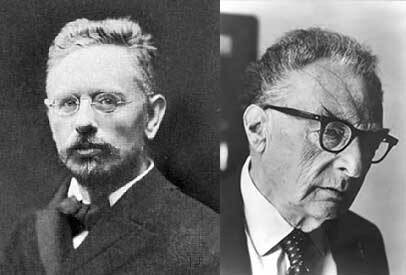 Otto Jespersen and Roman Jakobson: two great linguists not to be overlooked.
Otto Jespersen and Roman Jakobson: two great linguists not to be overlooked.Left and right via Wikimedia Commons (public domain)
The book is definitely worth reading. Perhaps college students will gain most from it. They will learn a lot about language and come across many important names. I only resent countless phrases like “as the linguist Elizabeth Closs Traugott explains…” (p. 57: we do not need the reference to Traugott’s profession, especially because she was by far not the first to explain that the word toilet came to English from French) and regret that in the book, which discusses Wittgenstein in detail and once mentions Freud, neither Otto Jespersen nor Roman Jakobson appeared a single time. Reviewers are irksome people. Yet more important than finding fault is the fact that in this case, the proverbial ointment is in full view, and flies, well, flies are unavoidable and when not too pesky, should be overlooked.
Featured image: “The Tower of Babel” by Pieter Bruegel the Elder, via Wikimedia Commons (public domain)
October 17, 2023
What does “community” mean to you?

What does “community” mean to you?
A community brings together a group of people with any number of commonalities. Whilst academic researchers are involved in a professional community, they also benefit from studying various aspects of the lives of those in their research. How does this influence their view of community and what it means to them?
The theme of this year’s Open Access Week is “Community Over Commercialisation”. As part of this, we’re looking at different definitions of “community” used within academic research. We spoke to researchers working in diverse specialties whose open access work touches on any aspect of community. We discuss the different definitions and contexts of community and how academic research informs our views and perspectives on the meaning and value of community.
Read on to discover what a selection of researchers had to say.
Julia Bartosch, corresponding author of “Gendered publication patterns in Socio-Economic Review” in Socio-Economic ReviewWhen I started working in academia, “community” was a fuzzy term. After a while, I got to know different communities in my research field and how they relate to my own research topics. Research areas are often very large, so “communities” are important to avoid getting lost and to create a sense of belonging. At this point, however, I realised that the communities were very different and that I felt more at home in some than in others. And I began to ask myself, why? Was it the topic at hand? The nature of the discussion? Or at the gender composition?
Among other things, this was the starting point for addressing the question of gender representation in my research field and specifically also in different communities. To be clear, gender distribution does not have to affect how much one feels at home in a particular community. But it is a powerful statement when you don’t feel at home and intuitively wonder if you are the problem. To ensure that this does not happen to everyone all the time, but especially to young researchers, I think it is important to shed light on the persistent gender imbalance in a variety of communities. In this way, academics can think about their communities in an informed way. And I hope that this can also increase political activity for future change.
Amy Gill, corresponding author of “Communities of Support for Care-Experienced Mothers” in The British Journal of Social WorkSupportive research networks are increasingly important to me as I near completion of a PhD exploring service responses to early parenthood among young people transitioning from out-of-home care. As Stacey Page, Melissa Hairston, and I describe in our auto-ethnographic paper in BJSW, “Communities of Support for Care-Experienced Mothers,” we strive to build genuine, mutually beneficial connections which nurture us as scholars raising children.
Building community within university settings that value profit and elitism over the wellbeing of PhD scholars and precariously employed academics is challenging. My academic community is virtual. It is mostly comprised of care-experienced and first-generation academics. We share advice, encouragement, and opportunities such as open access publishing options to others from historically underrepresented groups in higher education.
Sara Dada, corresponding author of “Understanding communication in community engagement for maternal and newborn health programmes in low- and middle-income countries: a realist review” in Health Policy and Planning“Research areas are often very large, so ‘communities’ are important to avoid getting lost and to create a sense of belonging.”
Community engagement can enable the meaningful participation and representation of minority or marginalized populations in the development of health policies and health systems strengthening. Rather than dropping an intervention or aid program into place without understanding and incorporating local lived realities, community engagement efforts emphasize working with communities that may range in size and scope. In maternal and newborn health, this community includes not only the health providers at the facility level and policymakers in the health systems, but also the often-vulnerable voices of the mothers, families, and neighbourhoods striving for accessible and equitable health services.
Sarah Nectoux, corresponding author of “Sensing technologies, digital inclusion, and disability diversity” in Journal of Computer-Mediated CommunicationThe term “community” does not have a fixed definition; rather, it fluctuates depending on the context in which it is applied. At its core, a community is defined by its members, yet the boundaries are often ambiguous. In the article “Sensing Technologies, Digital Inclusion, and Disability Diversity,” we made its fluidity the core of the research. By examining disability, minority language groups, and sensory technologies, we challenged the narrative limiting disability as a sole marker of identity. Communities, as we see them, embody diverse realities through their members. Those realities might find themselves at the intersection of more than one community. Ultimately, the research insists on the fluidity and permeability of the concept to uncover realities for individuals that find themselves at the intersection of multiple communities and as a way to critically engage with the multiple and incremental barriers to sensing technology access.
Tony Lawson, corresponding author of “The human person, the human social individual and community interactions” in Cambridge Journal of EconomicsCommunity has for so long now been so fundamental a focus of my research, much of it systematised under the head of social positioning theory. Community—by which I understand a social totality of relationally organised human persons and other entities—is a basic unit, or the ground, of all social constitution, the starting point (or a presupposition) of all relevant social analysis and the ultimate context of all emancipatory (and emancipated) endeavour.
Most social constitution takes the form of creating components of communities—teachers, students, employers, employees, money, corporations, Cambridge college high tables, hospitals—by way of relationally organising human persons and other entities that are (mostly) already in existence, forming thereby novel relational entities. Human emancipatory activity, concerned with bringing about a world in which we all can flourish in our differences, necessarily focuses centrally on transforming these community social relations, not least by absenting all aspects that are oppressive and/or discriminatory or otherwise harmful.
Shahreen Chowdhury, corresponding author of “A holistic approach to well-being and neglected tropical diseases: evaluating the impact of community-led support groups in Nigeria using community-based participatory research” in International Health“We share advice, encouragement, and opportunities such as open access publishing options to others from historically underrepresented groups in higher education.”
Community represents the bonds that tie people together. Although often understood in geographic terms, it can also transcend boundaries through shared values, perspectives, and identities. Community can also be understood through different scales—micro communities referring to localised, interpersonal relationships; meso pertaining to larger groups, organisation, or regions; macro extending to societies, nations, and broader collective identities.
In our paper, we use community based participatory research (CBPR), which focuses on community at the meso level with those living at the heart of issues. People affected by neglected tropical diseases (NTDs) through their shared lived experience actively designed support groups. As community spaces of healing, support groups fostered a sense of belonging and empowerment, highlighting the power of community in transformative action.
Ryan Stoldt, et al., authors of “Using racial discourse communities to audit personalization algorithms” in Communication, Culture and CritiqueDespite being something most people are involved with and connected with, community is a complicated word. It serves as a sociopolitical construct organized by and within groups of people who share similar tastes, interests, beliefs, identities, or sociohistorical ties as well as a disciplinary mechanism employed upon groups of people to sort and organize them as a means of control.
In Algorithmic Personalization & Society’s research on personalization algorithms, we see technologies as one form of control used to discipline communities. Personalization algorithms sort people into different communities, shaping what content people see and their overall experience online. In doing so, these algorithms often (re-)create the racist and sexist systematic failures of life offline and exacerbate other cultural issues like hyper-partisanship and radicalization. At the same time that we see personalization algorithms as a means of disciplining communities, we also care about how groups of people that come together based on shared commonalities experience, make sense of, and even push back against forms of control online.
Bernadette Brady, corresponding author of “An exploration of the experience of pain among culturally diverse migrant communities” in Rheumatology Advances in PracticeMy understanding of what “community” means has evolved over my research career. As I began to shine a light on other cultures and examine their beliefs, values, and norms, I began to critically reflect on my own culture and sense of community. I had been conditioned to value individualism and strive for independence and self-reliance. Yet, as I examined the sense of harmony and belonging that was associated with the collectivist cultures I was researching, I began to take on a new sense of “community”.
“Community” for me now transcends ethnicity, language, physical appearance, education, professional status and so many constructs that serve to separate us. It is about recognising the commonality in the human experience. My research now focuses on equity and ways to overcome differences that divide to ensure everyone can achieve good health and well-being.
Continue the conversation and leave us a comment: what does “community” mean to you and how does open access research influence this?
Featured image by Brooke Cagle, via Unsplash (public domain)
Oxford University Press's Blog
- Oxford University Press's profile
- 238 followers



